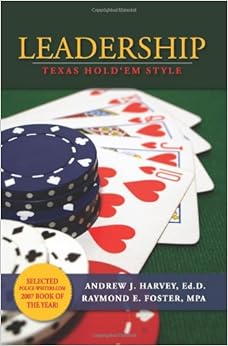By Chief Master Sgt. Grengs
52nd Fighter Wing Command Chief
Whether we like to admit it or not, toxic leaders exist in
our Air Force, from front line supervisors to commanding officers.
Every Airman must recognize and confront toxic leadership
because it undermines good order and discipline, corrupts the force from the
inside out and is counter to a healthy organizational climate.
What does toxic leadership look like?
There’s a wide spectrum of toxic leadership. Some people are
clearly toxic leaders, while others walk the line between directive and toxic.
On one side, there’s the over-the-top, narcissistic,
power-hungry leader who threatens, controls and can never admit his or her
faults. On the other, there’s the frontline supervisor who simply doesn’t
create an environment where Airmen want to contribute to the mission, and they
are not encouraged to reach their fullest potential.
Some people are overly directive, aggressive or obsessive
compulsive making them susceptible to exhibiting toxic leadership behaviors
when in a position of power.
Unfortunately, these leaders act and make decisions to
benefit themselves, not their people. Toxic leaders can be disrespectful to
those they lead; they create a negative environment of manipulation and fear.
To an outsider, that particular work center ruled by a toxic
leader may look effective, simply because tasks are completed and deadlines are
met. But in the end, such leadership rots away the purpose and motivation of
our great force and that damages mission success. More importantly, it damages
people.
People don’t complete tasks because they are empowered under
toxic leaders … they complete tasks because it is what they are told to do, and
they fear being ostracized and or retaliated against.
Yet most of the time, toxic leaders don’t even know they are
the problem; in their eyes, their behavior is perfectly acceptable.
What do you do if you are working for a toxic leader?
Unfortunately, there’s really no clear answer because every
situation is different. There are a couple options: confront the toxic leader
directly, seek guidance and/or support from the chain-of-command, document the
situation during a Unit Climate Assessment, discuss it during an
Airman-to-Inspector General interview, or address the problem with the Military
Equal Opportunity office.
I’ll be honest, working for a toxic leader can be hard
considering the power and authority they have over you. Confronting the toxic
leader directly about his or her behaviors or reporting the problem can be
downright paralyzing – it requires courage. Given this, many simply choose to
endure the toxic environment rather than step up to address it.
But if we don’t step up and confront toxic leadership, the
environment and organizational climate will not change for the better and
potentially more Airmen will suffer. Coming forward may inspire others to step
up and speak out too. Change often begins with the courage of one Airman. I
have seen many cases in which the toxic leader is removed from a position of
power and influence.
How can you make change in an organization?
This is where mentorship at every level comes in: we CAN
eliminate toxic leadership within our organizations by taking the opportunity
to step up and help create a healthy working environment.
Although stepping in and taking a stand may require people
to break out of their comfort zone; we can’t tolerate, condone or ignore
problematic behavior. We CAN create an environment of accountability, dignity
and respect that rejects leading by fear and manipulation.
Ridding the Air Force of toxic leadership contributes to a
simple but vital goal: reaching an ideal state where people are treated fairly
and valued for who they are regardless of what’s on their collars or sleeves.
At this point, where ever we are in our careers, we need to
look in the mirror and evaluate ourselves honestly: could we be toxic?
We must promote an organizational culture where individuals
can thrive, feel respected for who they are and are valued for their
contributions to the mission. This is vital to winning the fight, strengthening
the team, and shaping the future as Airmen in the world’s greatest Air Force.
In the end, if you treat people with dignity and respect,
you can inspire and motivate people to go above and beyond the mission. And
that’s real leadership.
- See more at:
http://airforcelive.dodlive.mil/2014/05/step-up-to-address-toxic-leadership/?source=GovD#sthash.jigm9InN.dpuf







No comments:
Post a Comment